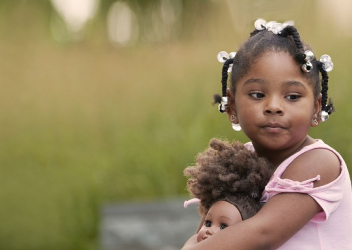Completed Traumatic Stress Research
In addition to the medical and biomechanical aspects of pediatric injury, researchers at the Center for Injury Research and Prevention (CIRP) have been addressing its psychosocial consequences, including traumatic stress, for more than two decades. CIRP's completed traumatic stress research portfolio examined the range of responses that children (and their families) experience after pediatric injury, including posttraumatic stress disorder (PTSD) in children.
They found that psychological distress, such as acute stress disorder (ASD) and PTSD, occurs in significant numbers of:
- children injured unintentionally, such as in car crashes
- youth injured by interpersonal violence
- parents of injured children
Key Completed and Foundational Research Projects
- Key Foundational Traumatic Stress Research Projects
-
Posttraumatic Stress Following Pediatric Injury: Update on Diagnosis, Risk Factors, and Intervention (2013)
This comprehensive review of the research published in JAMA Pediatrics summarizes current evidence regarding the impact of injury on children and families, risk and protective factors for posttraumatic stress (PTS), and available intervention strategies. Pediatric clinicians play a key role in preventing PTS by providing trauma-informed care.
Developing Practical Screeners for Acute Stress Disorder in Children - in English and Spanish (2001- present)
Acute stress disorder (ASD) is a constellation of early PTS symptoms occurring in the first month after a traumatic event. Despite the need to screen for this early distress, there are few well-validated child self-report measures of ASD. In a series of projects funded by NIH, the CIRP team developed a self-report checklist of ASD, the Acute Stress Checklist for Children (ASC-Kids). They then translated this measure into Spanish - as the Cuestionario de Estrés Agudo - Niños (CEA-N) - and then validated both the English and Spanish versions. Our team recently developed brief (3- and 6-item) ASC-Kids and CEA-N short forms in English and Spanish for use in clinical and research settings where a very brief acute stress screener is needed.
- Key Foundational Traumatic Stress Outreach and Interventions Research
-
Web-based Tools for Parents and Children (2005-present)
The CIRP team has developed a number of web-based tools for children and parents, involving these key audiences each step of the way to ensure that tools are user-friendly. CIRP researchers carefully evaluate the impact and effectiveness of web-based information and interventions for preventing PTSD in children. For example, AfterTheInjury.org is a web-based resource for parents that has been shown to increase parents’ knowledge of child traumatic stress reactions and how to help children recover.
Screening and Secondary Preventive Interventions for Injured Children and Their Parents (2002-present)
Building on earlier findings, the CIRP team developed and tested models for screening and preventing PTS after pediatric injury. With funding from the Emergency Medical Services for Children (EMSC) Program, CIRP researchers developed and piloted a range of methods for integrating screening or brief preventive interventions for recently injured children and their parents within pediatric care:
- Examined the feasibility of screening for PTSD risk in a busy emergency room setting by having Emergency Department (ED) nurses administer The Screening Tool for Early Predictors of PTSD (STEPP) during the course of their normal clinical encounters.
- Piloted trauma surgeon discharge letters to primary care providers, with information on traumatic stress, tips for providing anticipatory guidance to injured children and their families, and evidence-based handouts for parents to prevent PTSD in children.
- Piloted an automated alert in the primary care electronic health record after a child’s Emergency Department treatment for unintentional injury.
- Conducted a randomized controlled trial of an integrated intervention, the Stepped Preventive Care (SPC) model, with funding from the Centers for Disease Control and Prevention (CDC). In the SPC model, hospital-based nurses and social workers screen injured children for risk of PTSD symptoms, and deliver “just enough” care to help prevent persistent PTS or depression.
-
Read about our current research.







